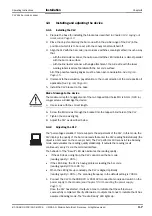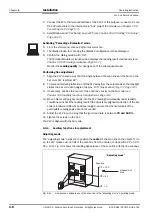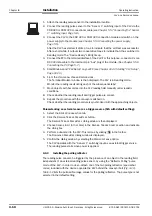
Operating Instructions
Chapter
4
CLV 42x bar code scanner
Installation
8 009 981/O078/16-08-2004
©
SICK AG · Division Auto Ident · Germany · All rights reserved
4-5
Angular alignment of the CLV
Optimum alignment of the CLV is achieved when the scan line travels over the bar code lines
almost at a right angle (90
°
) (
). All possible reading angles that can occur between
the scan line and the bar code must be taken into consideration (
and
Preventing surface reflection
If the light from the scan line strikes the surface of the bar code perpendicularly, interference
may be caused by reflections when the returned light is received. To prevent this effect, the
CLV must be installed in such a way that the emitted light is tilted slightly with respect to the
shows an example of this using the line scanner.
The laser beam from the line/raster scanner with angle attachment is emitted at an angle
of 105
°
with respect to the housing. Depending on the application, the device can also be
installed flush with the conveyor belt.
Fig. 4-6:
Line scanner: reading angles between the scan line and the bar code
β
α
γ
Reading
area
α:
Azimuth angle (tilt)
β:
Inclination angle (pitch)
γ:
Rotation angle (skew)
Reading
distance
Angle
Limit
Azimuth
α
(tilt)
max. 30
°
(resolution 0.35 mm (13.8 mil), depending on the code print)
Inclination
β
(pitch)
max. 45
°
(depending on the module width)
Skew
γ
max. 45
°
(depending on the module width)
Table 4-1: Permissible reading angles between the scan line and bar code
Fig. 4-7:
Preventing surface reflection: angle between the emitted light and bar code (tilted away
from the vertical axis)
Line scanner
(front reading window)
Line scanner with
105
°
angle attachment
(side reading window)
top view
top view
105
°
105
°
















































